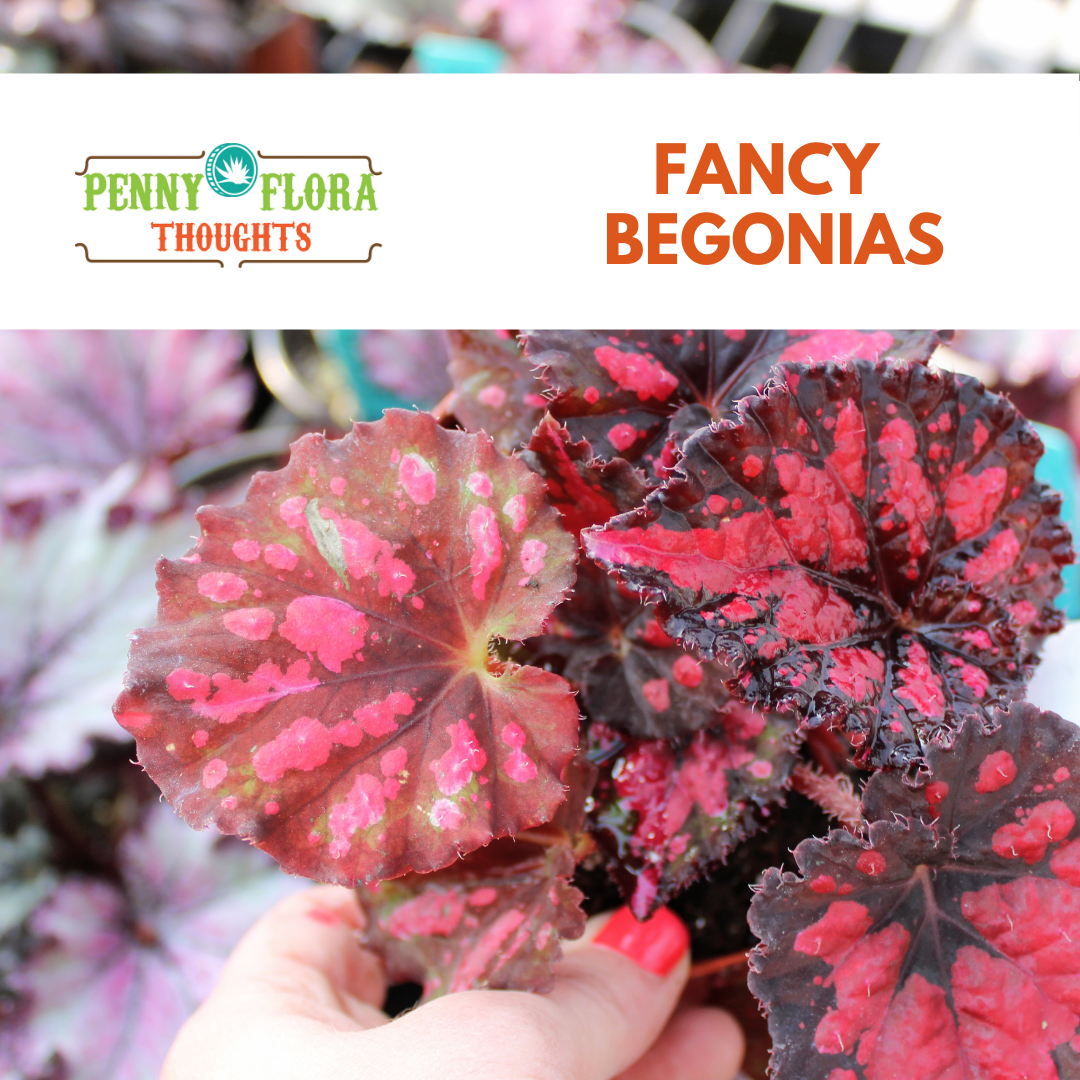Begonias love to steal the show in our greenhouse. With the recent arrival of Jurassic Rex™ begonias, our customers can’t help but stop and gawk at the fabulously pebbled, spiraled and patterned leaves.
For generations, plant fans have been attracted to this large and diverse genus of more than 1,800 tropical and subtropical varieties. Begonias literally come in all shapes and sizes. Their leaves can be almost any color or combination of colors. And, the flowers bloom in all colors, except blue. Some feature clusters of tiny flowers while others have giant double blossoms. According to the American Begonia Society, begonias are known as the great foliage impostors since their leaves can resemble ivies, ferns, aralias, grasses, and peperomias.

Classes
The hundreds of begonia species generally fall into a few groups by their root structure:
- Fibrous begonias: Called “Cane” and “Angel Wing” begonias, this group has a standard root ball with thin fibrous roots. They’re among the easiest to grow and have thick, upright (and sometimes trailing) stems and often waxy, colorful winglike-leaves. Many produce dramatic flower clusters. ’Canary Wings’ is an award-winning one bred here at Groovy Plants Ranch. We love its chartreuse leaves and bright red flowers.
- Wax begonias: This widely grown begonia group is known for its waxy rounded leaves in green and bronze. They’re popular bedding plants with flowers in every shade of red, pink and white.
- Rhizomatous: These begonias have thick rhizomes – fleshy underground stems that send out shoots and roots. They’re called “fancy begonias” for their interesting leaves and clusters of white or pink flowers. Check out the Polka Dot begonia (Begonia Maculata) with its spotted angel wing leaves and bright coral flowers.
- Rex: This subcategory of rhizomatous begonias has the showiest leaves. They’re grown as houseplants and worth the extra care for their extravagant foliage display. At Groovy Plants Ranch, we feature the Jurassic series including Green Streak, Watermelon, Cherry Spike, Pink Splash, Heartbeat, Silver Swirl, Silver Point and Pink Shades.
- Tuberous: This group has the most spectacular flowers in bright shades of pink, yellow, orange, red, or white. They have fleshy, round tuberous roots like a potato and generally bloom in mid-summer through fall. The tubers are often planted as annuals each year and can be dug up and stored indoors for the winter. They are popular for both landscape planting and containers.
- Hardy begonias: Called Begonia grandis, this species is hardy to zone 6 and is commonly grown as a perennial in garden borders. Hardy begonias have foliage like tuberous begonias but produce rather small pink or white flowers. Try growing strawberry begonias indoors as a houseplant or outdoors as a perennial groundcover, container plant or rock garden accent.
Growing Tips
Outdoors, cane, angel-wing, wax and tuberous begonias are grown as annuals in containers and flower beds. They prefer bright, shady areas out of direct mid-day sun. Most do well with direct morning sun or dappled sunlight all day long. As houseplants, rhizomatous begonias can be grown outdoors in summer months then moved indoors to an east- or west-facing window. They should be watered thoroughly when the top of the potting mix is dry to the touch. Also remember to fertilize with ¼-strength at each or every other watering.
Some begonias, especially the Rex types, can be prone to powdery mildew so give them air circulation and avoid getting foliage wet when watering. To encourage begonias’ side shots and bushy growth, pinch back tall stems through the growing season. More begonias can be easily propagated from leaf cuttings.


4 comments
Hi! I’m trying to find shade plants and I must be doing something wrong. All I l see is booklets about various plants. HELP! I LOVE your place and wonderful staff.
Might you have or will you be getting in angel wing begonias or trailing? Thank you!
I am looking for a strawberry begonia Do you have any? LMK thanks so much . B.
Do you have any angel wing begonias?
Preferably yellow but I’ll be happy with any .